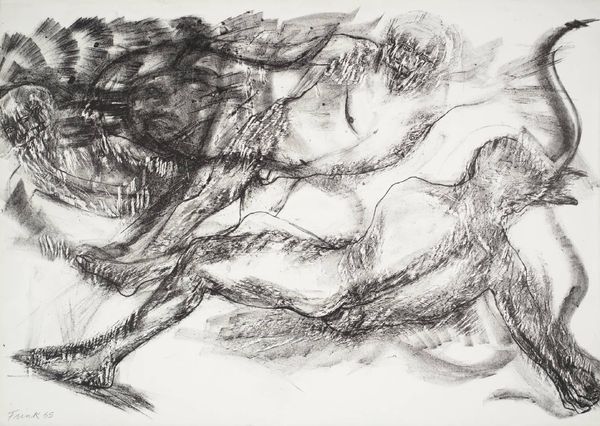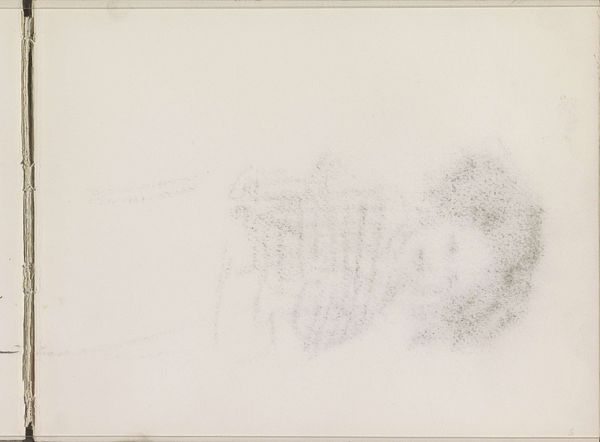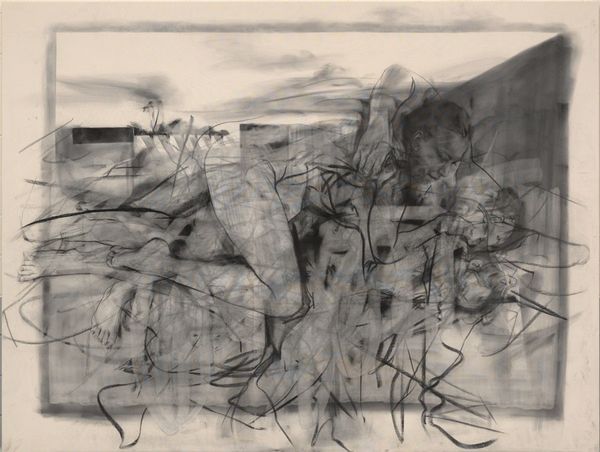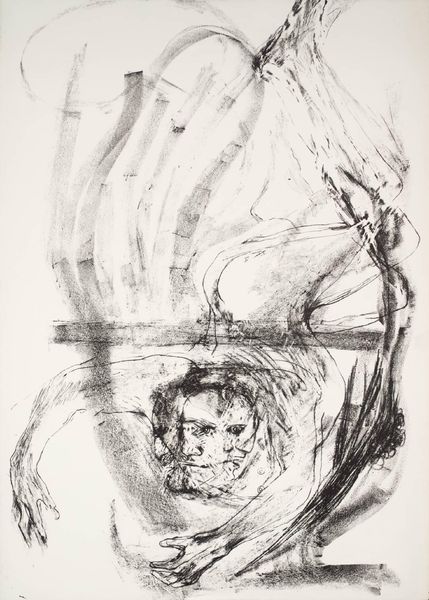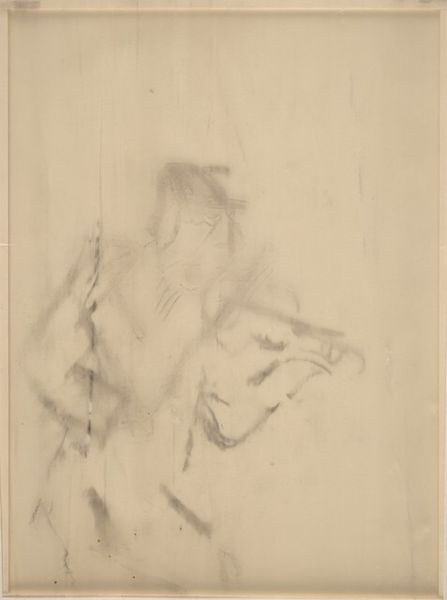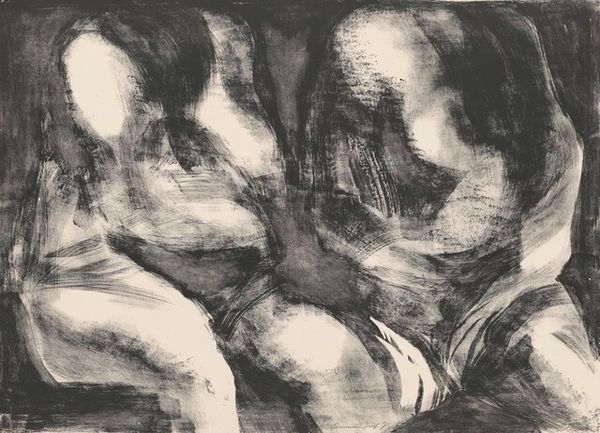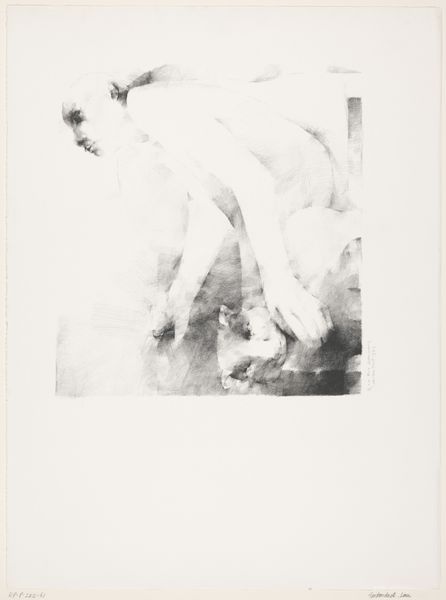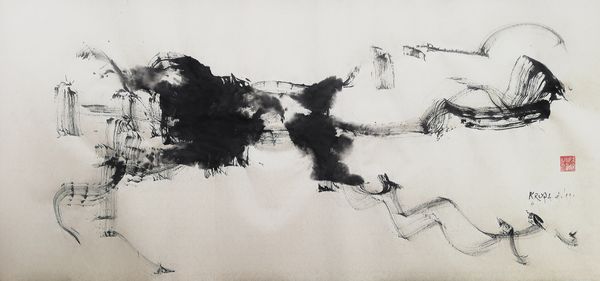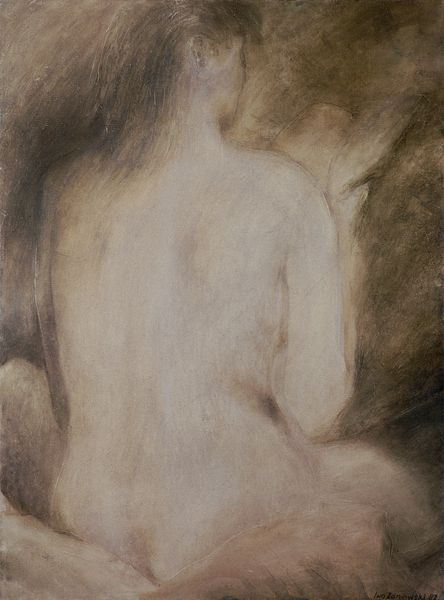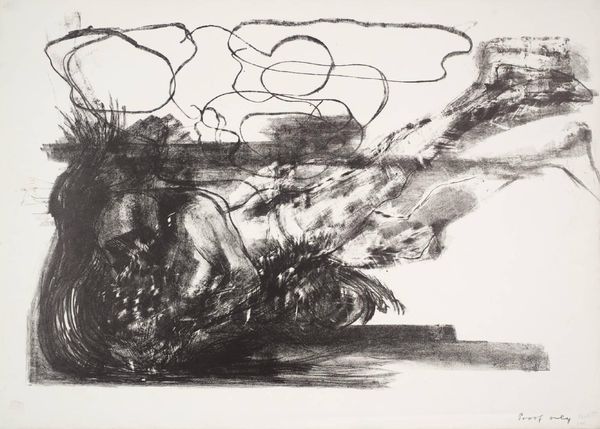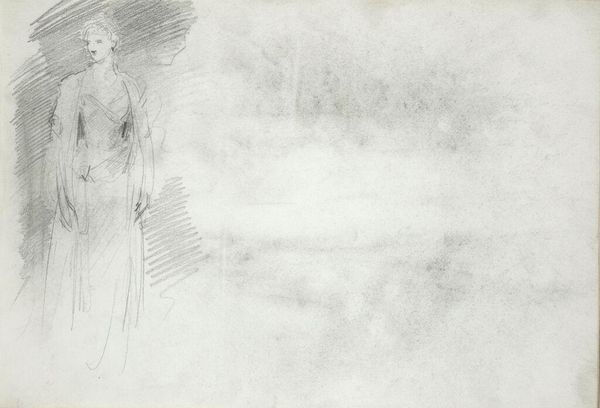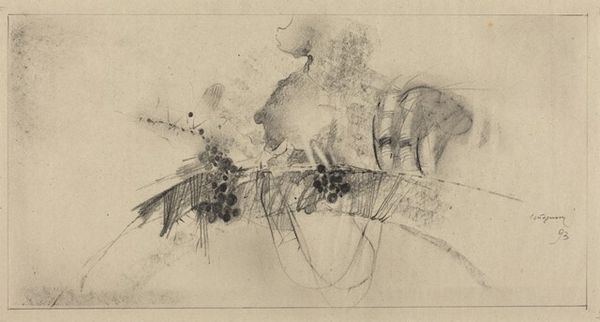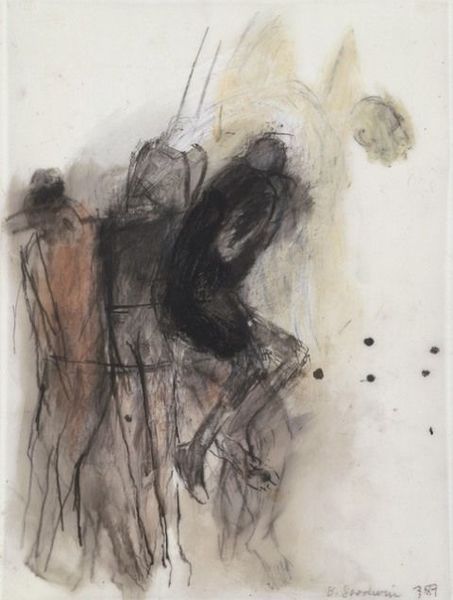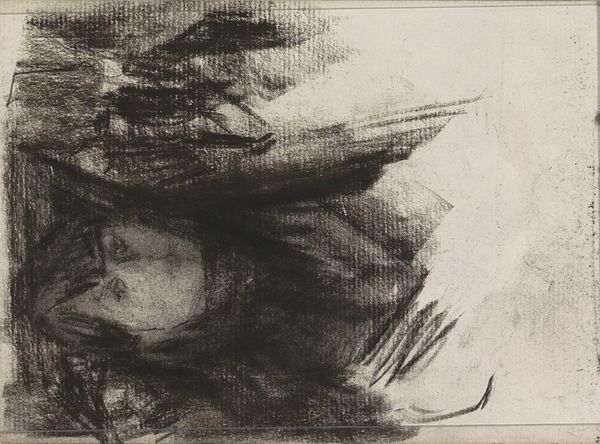
drawing, print, pencil
#
portrait
#
pencil drawn
#
drawing
# print
#
pencil sketch
#
charcoal drawing
#
figuration
#
pencil drawing
#
pencil
Copyright: National Gallery of Art: CC0 1.0
Editor: Here we have Harold Altman’s “Matriarch I,” a print from 1961 created with pencil. The blurred figures give a sense of movement, but it also feels melancholic and uncertain. How do you interpret this work? Curator: Immediately, the hatching technique is striking. Notice the density and direction of the pencil strokes. How do they build form and convey a sense of light and shadow? Editor: They’re very fine lines, almost like a sketch. There's not much tonal range. Curator: Precisely. The limited tonal range creates an interesting tension with the implied depth. Do you perceive how Altman uses line weight and density to suggest the relative spatial positions of the figures? Editor: Yes, the figure in the middle is darker and more defined. That’s why they appear closer, I think. Curator: Indeed. Consider, too, the negative space. How does the emptiness around the figures contribute to the overall composition? It allows them to float almost ethereally. The blurring too destabilizes our clear recognition. Editor: So it’s less about who these figures are and more about the formal qualities of the lines, the space, and how they interact. Curator: Yes, the strength here is in Altman’s ability to capture a fleeting moment using the intrinsic elements of drawing. Editor: I never thought about approaching a portrait quite like that, looking at the lines and composition rather than just the subject. Curator: Considering the structure enriches our perception and can be reapplied to any piece we examine.
Comments
No comments
Be the first to comment and join the conversation on the ultimate creative platform.
